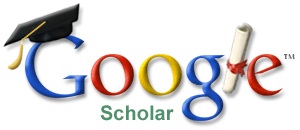The Motives of Sudanese Tourists to Choose Bandung as A Tourism Destination
Abstract
The motivation factor is one of the most important elements for choosing tourism destination, this study aims to find out the motives of Sudanese tourists for choosing Bandung as tourism destination, this research uses a Qualitative approach to describe this topic as phenomenological study, the study showed that the factor of culture, religion, behavior, nature, the experiences of former tourists, shopping, price, have a very big role in motive Sudanese tourists to choose Bandung as a tourist destination. This study shows that the factors of excellence tourist destinations in Bandung have important indicators including the type and nature of tourist attractions; service quality, physical and social environment, cost, accessibility, and behavior of local residents to tourists. Tourist destinations in Bandung in the view of some Sudanese tourists have high accessibility, leading tourist attractions in tourist destinations easily accessible because of good road conditions. In the regulation of traffic and transportation is very chaotic because the traffic rate of vehicles is so crowded. Decent accommodation and a complete and clear guide/instruction. The lowest score is the attribute of the accessibility of tourist destinations in Bandung.
Keywords
Full Text:
PDFReferences
Bansal, H., & Eiselt, H. A. (2004). Exploratory research of tourist motivations and planning. Tourism management, 25(3), 387-396. https://doi.org/10.1016/s0261-5177(03)00135-3
Barber, N. A. (2014). Profiling the potential “green” hotel guest: Who are they and what do they want? Journal of Hospitality & Tourism Research, 38(3), 361-387. https://doi.org/10.1177/1096348012451462
Blanchard, L.-a., & Higgins-Desbiolles, F. (2013). Peace through tourism: promoting human security through international citizenship: Routledge.
Crooks, V. A., Turner, L., Snyder, J., Johnston, R., & Kingsbury, P. (2011). Promoting medical tourism to India: Messages, images, and the marketing of international patient travel. Social Science & Medicine, 72(5), 726-732. https://doi.org/10.1016/j.socscimed.2010.12.022
Croy, W. G. (2010). Planning for film tourism: Active destination image management. Tourism and hospitality planning & development, 7(1), 21-30. https://doi.org/10.1080/14790530903522598
Ferguson, L. (2011). Promoting gender equality and empowering women? Tourism and the third Millennium Development Goal. Current Issues in Tourism, 14(3), 235-249. https://doi.org/10.1080/13683500.2011.555522
Fodness, D. (1994). Measuring tourist motivation. Annals of tourism research, 21(3), 555-581. https://doi.org/10.1016/0160-7383(94)90120-1
Horng, J.-S., & Tsai, C.-T. S. (2010). Government websites for promoting East Asian culinary tourism: A cross-national analysis. Tourism management, 31(1), 74-85. https://doi.org/10.1016/j.tourman.2009.01.009
Irshad, H. (2010). Rural tourism–an overview. Rural Development Division, Government of Alberta, Canada.
Joseph, A. I., & Kumar, S. V. A. (2016). Determinants of Social Media Use Across Tourist Lifecycle Phases-An Empirical Investigation of Tourist Motives. International Journal of Tourism and Travel, 9(1&2), 1-7. Retrieved from https://www.cabdirect.org/cabdirect/abstract/20173085746
Kay, P. L. (2009). Cultural experience tourist motives dimensionality: A cross-cultural study. Journal of Hospitality Marketing & Management, 18(4), 329-371. https://doi.org/10.1080/19368620802590217
Kotler, P., Bowen, J. T., Makens, J., & Baloglu, S. (2017). Marketing for hospitality and tourism.
Mulyana, Deddy. (2002). Metodologi Penelitian Kualitatif. Bandung. PT. Remaja Rosdakarya.
Musa, H. G., Mulyana, D., Bajari, A., & Navarro, C. J. S. (2020). Promoting tourism destinations through Sudanese tourists interacting experiences in Bandung. Jurnal Studi Komunikasi, 4(1), 21-31. https://doi.org/10.25139/jsk.v4i1.2150
Mustafa, M. H. (2010). Tourism and globalization in the Arab world. International Journal of Business and Social Science, 1(1), 37-48. http://www.ijbssnet.com/journals/4.pdf
Pan, S., Santos, C., & Kim, S. (2017). Promoting tourism, projecting power: The role of television commercials. Journal of Travel & Tourism Marketing, 34(2), 192-208. https://doi.org/10.1080/10548408.2016.1156610
Richards, G. (2011), Creativity and tourism: the state of the art. Annals of Tourism Research, 38(4), 1225-1253. https://doi.org/10.1016/j.annals.2011.07.008
Stoica, I., Orzan, G., Dobrescu, A., & Radu, A. C. (2015). Online Marketing Communication Using Websites. A Case Study of Website Utility in Accessing European Funds in the Tourism Field Regarding Northeastern Romania. Procedia Economics and Finance, 23, 926-935. https://doi.org/10.1016/s2212-5671(15)00436-0
Toelkes, C. (2018). Sustainability communication in tourism–A literature review. Tourism Management Perspectives, 27, 10-21. https://doi.org/10.1016/j.tmp.2018.04.002
DOI: https://doi.org/10.18196/mb.11189
Refbacks
- There are currently no refbacks.
Copyright (c) 2020 Jurnal Manajemen Bisnis
Office:
Ruang Jurnal Manajemen Bisnis,
Gedung Ki Bagus Hadikusuma (E4) Lantai 2, Kampus Terpadu Universitas Muhammadiyah Yogyakarta,
Jalan Brawijaya (Lingkar Selatan), Tamantirto, Kasihan, Bantul, Daerah Istimewa Yogyakarta, Indonesia, 55183
Website: journal.umy.ac.id/index.php/mb - E-mail: mabis@umy.ac.id
Phone: +62 274 387 656 (ext: 118)
Jurnal Manajemen Bisnis is licensed under Creative Commons Attribution-ShareAlike 4.0 International (CC BY-SA 4.0)







